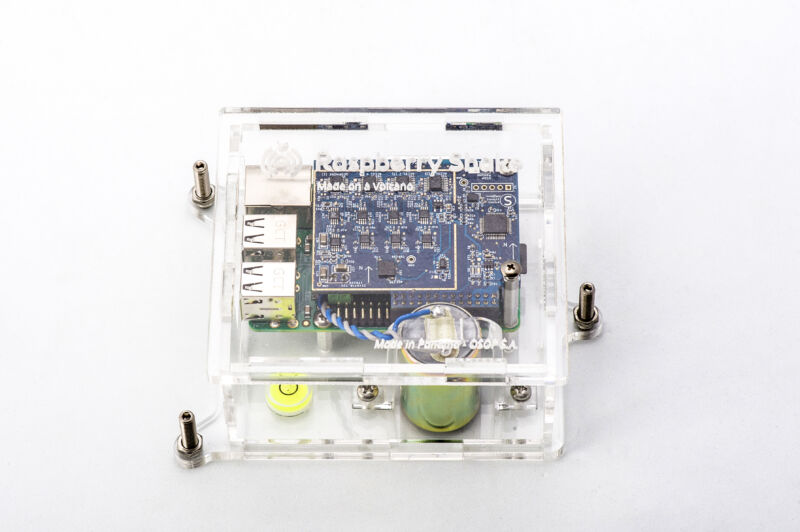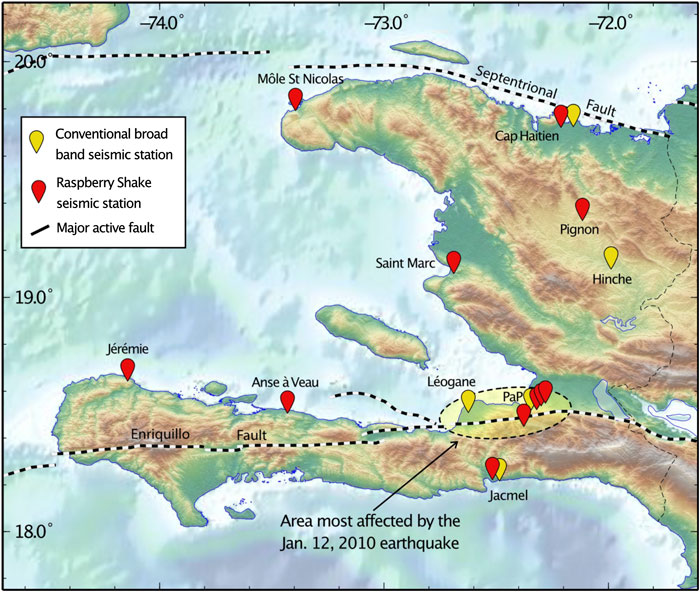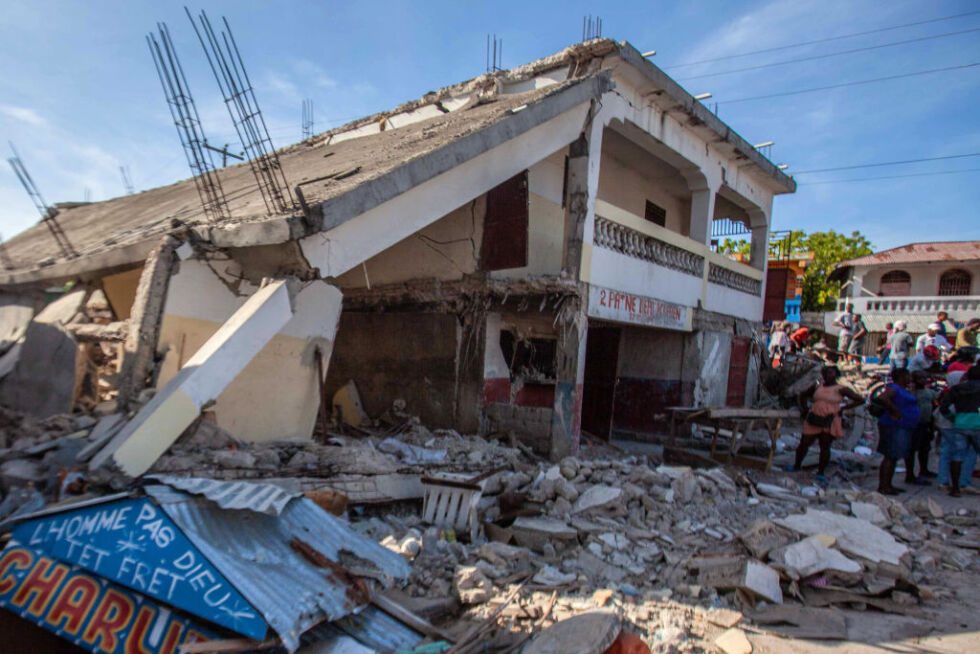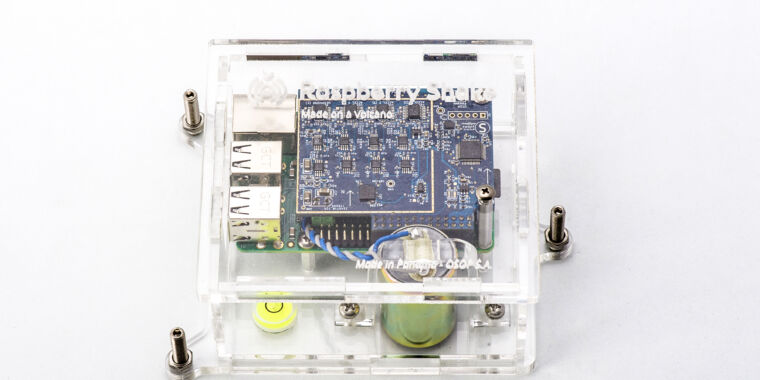
Mike Hotchkiss, Raspberry Shake
On the afternoon of January 12, 2010, an earthquake measuring 7.0 on the Richter scale struck about 25 kilometers west of Port-au-Prince, the capital of Haiti. More than 100,000 people lost their lives among the most significant recorded seismic disasters. The damage — costing billions of dollars — left more than a million people homeless and destroyed much of the region’s infrastructure. The earth ruptured at the relatively shallow depth of about 8 miles, knocking poorly constructed buildings over.
At the time, Haiti had no national seismic network. After the devastating event, scientists installed expensive seismic stations across the country, but that instrumentation requires funding, care and expertise; today those stations are no longer functional. In 2019, seismologists chose to try something different and much cheaper: citizen eismology via Raspberry Shakes.
On the morning of August 14, 2021, amid a summer of COVID-19 lockdowns and political unrest, another earthquake struck, providing an opportunity to test how useful these Raspberry-pi-powered devices could be. In a paper published Thursday in Science, researchers described using the Raspberry Shake data to demonstrate that this citizen science network successfully tracked both the main shock and subsequent aftershocks, providing data integral to untangling. of what turned out to be a less than simple representation of. the earth.
More powerful earthquake
The August 2021 event clocked in at a magnitude of 7.2-40 percent more powerful than its 2010 predecessor. It tore along the same fault zone, but in a more rural region, resulting in relatively fewer losses. Nevertheless, about 2,500 people lost their lives, 13,000 were injured and at least 140,000 homes were destroyed or damaged.
One of the Raspberry Shakes installed in 2019 happened to be about 13 miles from the epicenter, with two more citizen stations close enough to detect the quake. Along with two other seismic stations in Port-au-Prince — one at the U.S. Embassy and another educational tool at a local high school — the Raspberry Shake alert came in within a minute of the quake, Eric Calais said. (Calais was one of the scientists leading the international response after both the 2010 and 2021 earthquakes and a citizen science initiative leader.) Two more Raspberry Shakes near the epicenter, unavailable during the main shock due to internet connectivity issues, were reconnected by their host within two hours.
An unusable network
To detect rumbles in the ground — including earthquakes — you need a seismic station full of sensors, a means to record the data, a place to store that information, and power to run the whole device. Seismologists typically rely on expensive seismic stations that must be carefully installed to minimize background vibrations caused by humans, wind and even atmospheric pressure changes. To report data in real time, stations need constant communication over cellular networks or satellite links. These stations must be maintained by specially trained specialists.

The Raspberry Shake Network in Haiti.
After the 2010 earthquake, the newly installed conventional seismic network would be maintained by Haiti’s Bureau of Mines and Energy. In 2018, when an earthquake measuring 5.9 on the Richter scale killed 17 people, none of these stations were functional, forcing the people of Haiti to rely on information collected remotely by the US Geological Survey.
According to co-author and seismologist Anthony Lomax, his impression of Haitian scientists is that a major impediment to a stable seismic network is general lawlessness ranging from equipment theft to ransom kidnapping.
“The three main roads from Port-au-Prince to the provinces are controlled by gangs,” said Calais. “The government had to pay them to stop shooting and robbing so humanitarian aid could continue after the earthquake.”
Raspberry Shake to the rescue
Raspberry Shakes – low-cost plug-and-play seismic stations that require little maintenance – can circumvent many of the problems that plague the conventional seismic network. Backed by a Raspberry Pi computer that manages uploading data to servers, Raspberry Shakes require an internet connection and a power outlet to provide data storage and power respectively. While conventional seismic stations can cost upwards of $10,000 each, these instruments are a fraction of that: about $400.
While multiple models exist that can measure different things (such as this Raspberry Shake and Boom, which also includes an infrasound detector), the scientists responsible for deploying Haiti’s citizen science network chose the Raspberry Shake 4D, which uses a vertical Includes speed detector and accelerometers that measure movement in two horizontal directions and up-down. Funding for this project comes mainly from two French institutes, says co-author Françoise Courboulex. The Raspberry Shake network was largely installed in Haiti by Steeve Symithe and Calais.
Symithe, Calais and their fellow citizen scientists placed stations in convenient locations, such as the above-mentioned living rooms, which were quite noisy. The ambient vibrations captured by these stations are typically much higher than a conventional seismic station shielded from the vibrations of everyday life by specially designed vaults. Despite the noise, these Raspberry Shakes still provide valuable information in a country where other seismic instruments are lacking.
Currently, many stations provide real-time data available on the ayiti-seismes platform. This network can detect much smaller earthquakes in Haiti than other Caribbean regional networks, with the latest locations and magnitudes available on the website.
shake test
The Raspberry Shake station closest to the quake, R50D4, provided valuable information both during and after the quake. First, the peak ground acceleration — the maximum acceleration the ground experienced during an earthquake at that seismic station’s location — was slightly greater than expected. The expected value went to building codes published in 2012. Acceleration and shaking, Lomax said, tend to be greater on higher floors. This means that newer multi-storey buildings are not designed to withstand the 2021 event.

In any case, only about 10 percent of Haitian buildings are designed and verified by engineers, Calais said. “It’s up to the engineers to follow the code or not,” he explained. “There is no liability.”
The single well-located station, R50D4, also offered seismologists the opportunity to test whether they could use machine learning to identify aftershocks with just a single seismic station. They trained the algorithm to detect earthquakes larger than magnitude 3.0 using databases of earthquakes and sound. This machine-learning procedure applied to station R50D4 gave the time and estimated magnitude for any subsequent aftershocks near the station, Lomax said.
The resulting catalog was incredibly good compared to the catalog of aftershocks produced by the entire citizen seismic network. “AI is quite powerful at finding signals hidden in the noise, provided the algorithm is well trained to recognize earthquakes,” Calais said.
This study emphasizes the importance of observations near the rupture site, said seismologist Wenyuan Fan, who was not involved in the study. “Even scarce, cheap, relatively noisy observations can help with risk reduction and risk management.”
Clusters of slip, clusters of earthquakes
One of the other things the Raspberry Shake data provided information about is the complicated nature of the failure system in Haiti. The fault that the 2010 and 2021 earthquakes hit appears to be primarily a strike-slip, where two tectonic plates grind past each other instead of moving toward or away from each other. But in Haiti, the Caribbean plate is scraping against the North American plate while also pushing toward it. Because of this oblique movement, earthquakes can be strike-slip as well as have a reverse component, in which they converge, here at an angle. Those reverse faults hide underground, and unlike strike-slip faults, they are never allowed to tap into the surface while wreaking havoc from below.
The 2010 earthquake contained elements of both types of plate motion, and analysis of seismic data suggests the same happened in 2021.
Based on their analysis, which includes data from Raspberry Shake as well as information from remote conventional seismic stations, Calais and his colleagues found that the 2021 earthquake could be split into two separate sub-events. The quake started out as a thrust, with one side moving up relative to the other, but this was largely hidden – this part of the quake didn’t break through the surface. The second sub-event was the strike-slip component that occurred west of and after the first part. This fault was shallower and broke the surface, Calais said.
The thrust sub-event may have “triggered” the strike-slip event. That they are mere coincidences is almost impossible, Lomax said.
“More work will tell us,” Calais said, of the relationship between these two parts of the entire quake. “The earthquake could have stopped after sub-event one, but the rupture carried enough energy to jump to another nearby segment,” he said, “same as 2010!”
Science, 2022. DOI: 10.1126/science.abn1045
Alka Tripathy-Lang is a freelance science writer with a Ph.D. in geology. She writes about earthquakes, volcanoes and the inner workings of our planet.

